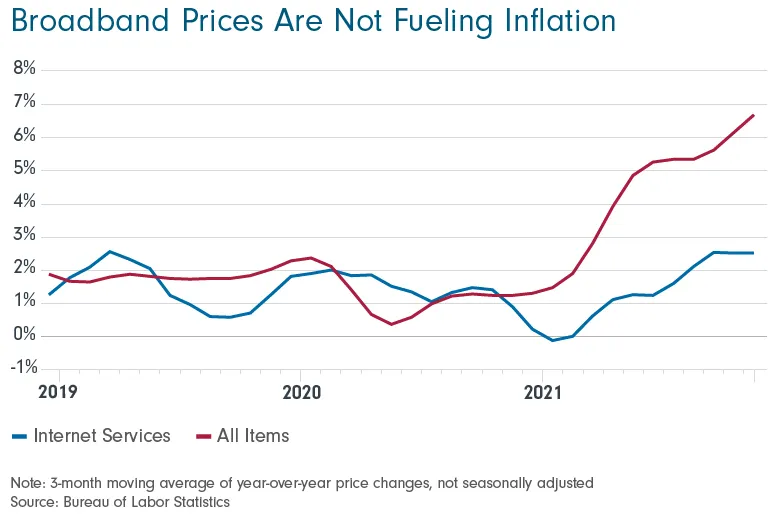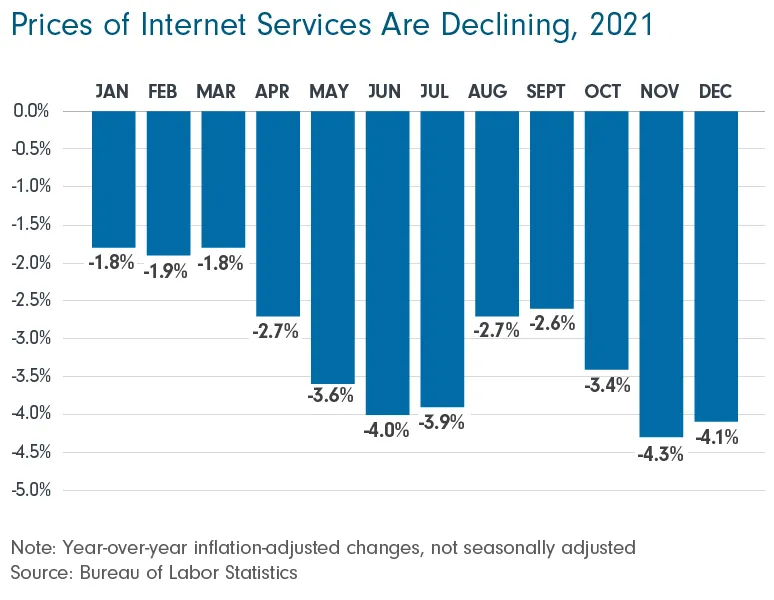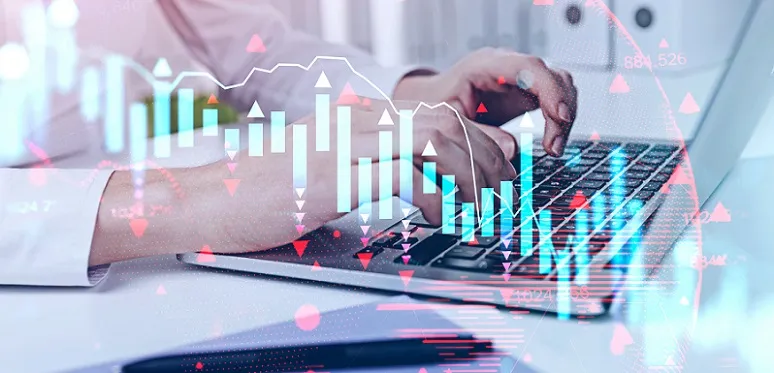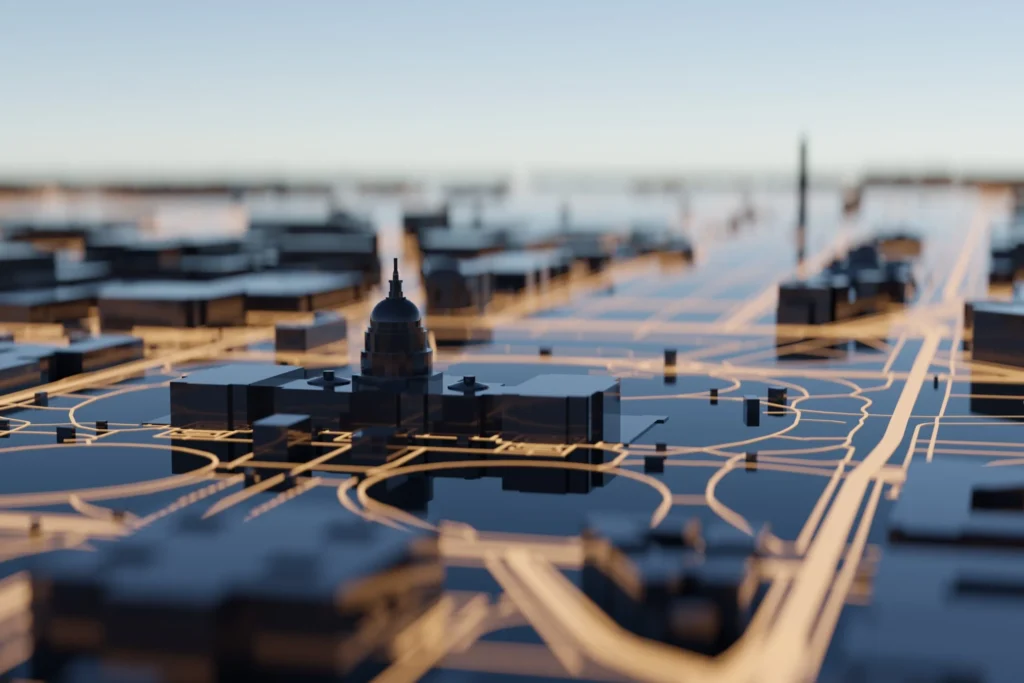America has an inflation problem. Consumer demand for goods and services is driving an increase in prices (the definition of inflation) to rates not seen since 1982. In December 2021, price increases for used cars jumped 37%, gasoline skyrocketed nearly 50%, and groceries climbed about 7% relative to December of the previous year. These increases are felt by all Americans.
But the price of internet service has remained steady and is not mirroring these radical price spikes. According to the Bureau of Labor Statistics Consumer Price Index (CPI), the cost of internet services increased 2.6% in December relative to the previous year, well below the overall year-over-year inflation rate of 7%.
BLS data in the chart below illustrates the price gap. It shows the change in prices for all goods and services in the economy for the last three years compared to the change in the price of internet services. Here is what the data shows:
- In 2019 and 2020, the price change for internet services moved in virtual lockstep with the price change for all goods and services for those two years.
- However, throughout 2021, the rate of increase in overall prices outpaced the increase in the price of internet services, with the gap increasing throughout the year.

What does this mean for consumers? As the chart below highlights, on an inflation-adjusted basis, the year-over-year change in the price of internet services was negative throughout 2021, with the size of this decline generally increasing throughout the year.

These consistently low prices for internet service have occurred despite strong increases in demand, with the COVID pandemic demonstrating that the internet is a crucial service for consumers to work, study, and stay connected from home. No matter how you cut it, consumers have been getting a good deal for internet service compared to other goods and services.
But even with limited price increases, some low-income households struggle to find the money necessary to subscribe to this vital service. Our country cannot afford this digital gap among our citizens. To address this challenge cable broadband providers have expanded broadband adoption programs and low-cost plans, with services for $10 – $20 a month, often with discounts for computers and training to improve digital skills and proficiency. These programs have connected over 14 million Americans to the internet in the past 10 years and have been bolstered by participation in the FCC’s Emergency Broadband Benefit and Affordable Connectivity Program to help financially strapped consumers pay for their monthly broadband service.
There has been real anxiety about empty grocery store shelves and the price we pay for what groceries are available, and whether we can afford a car, assuming we can even find one. However, we should be celebrating the fact that internet services, which are crucial to our everyday lives, has remained available and affordable.









